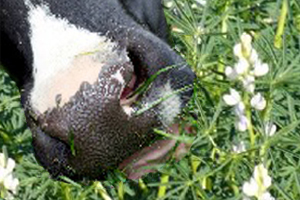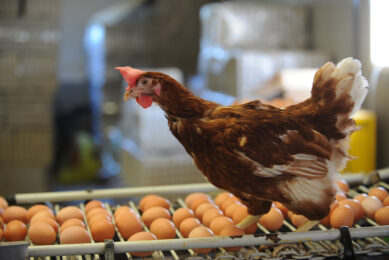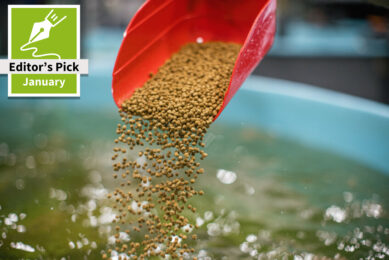Feeding lupin to livestock could save on soya costs

Lupins could be grown on virtually every livestock farm in the UK, helping to plug the protein gap and reducing the country’s reliance on imported soya.
Farmers who do so will produce a livestock concentrate feed of 28-42% protein which can be harvested using a conventional combine and easily processed and stored on farm. Earlier obstacles to growing combinable lupins have been largely overcome while animal growth rates attainable are at least equivalent to those from soya.
These are among the conclusions of a three-year research project – involving 10 industry partners and two universities – whose findings have been reported this month. Included in the project was a trial involving lambs which were fed crimped lupins with crimped barley, and assessed against those on a comparable commercial finisher diet.
Christina Marley, who undertook the trial at Aberystwyth University in Wales, said there were no statistical differences in the performance of lambs on the two rations, but that the lupin diet would save the producer £3.64 (€4.94) a lamb.
Feeding lupins
Andy Strzelecki from feed preservation specialists, Kelvin Cave, says that by crimping lupins – using a contractor to crimp the grain and apply the relevant preservative – the crop could be harvested in August or September at a high moisture content (up to 30%) and clamped, sealed and stored in a small silage pit or plastic tube.
“Other methods of preservation include propionic acid if harvested at between 17% and 25% moisture, or drying the lupins down to a moisture content below 17% and storing without preservative,” he says. This range of storage options meant combinable lupins could be grown on a wide cross-section of farms, he added.
David McNaughton from protein crop specialist Soya UK remarks that about 80% of lupins are currently grown for wholecrop forage, but says there is scope for a vast increase in acreage of combinable lupins. “Lupins have a huge constituency of potential growers – virtually every livestock farmer with a spare field can grow them wherever he is, for either foraging or combining,” he says, adding that blue lupins are more likely to suit the north and west while whites could be grown in the south and east and will tolerate more alkaline soils.
Lupins are more resistant to bad weather than other raw materials
“If we want to make a hole in the three million tonnes of soya we import, the answer is to grow lupins on livestock and arable farms,” says McNaughton. He adds that lupins are more resistant to bad weather than other legumes such as peas or beans; they have a more favourable amino acid profile as a livestock feed; and they contain more by-pass protein, which is important for high-performance ruminants, particularly dairy cows.
He also expects full approval for an effective post-emergence herbicide to be imminent, which will add some insurance for growers. He says a further significant impetus to the uptake of lupins will come from the Common Agricultural Policy whose new ‘greening’ rules will require greater crop diversity and will be compulsory for those in receipt of the new basic payment.
The three year LUKAA research project (Lupins in UK Agriculture and Aquaculture) was funded by industry partners with Innovate UK (formerly the Technology Strategy Board) and the Biotechnology and Biological Sciences Research Council (BBSRC).
See also:











